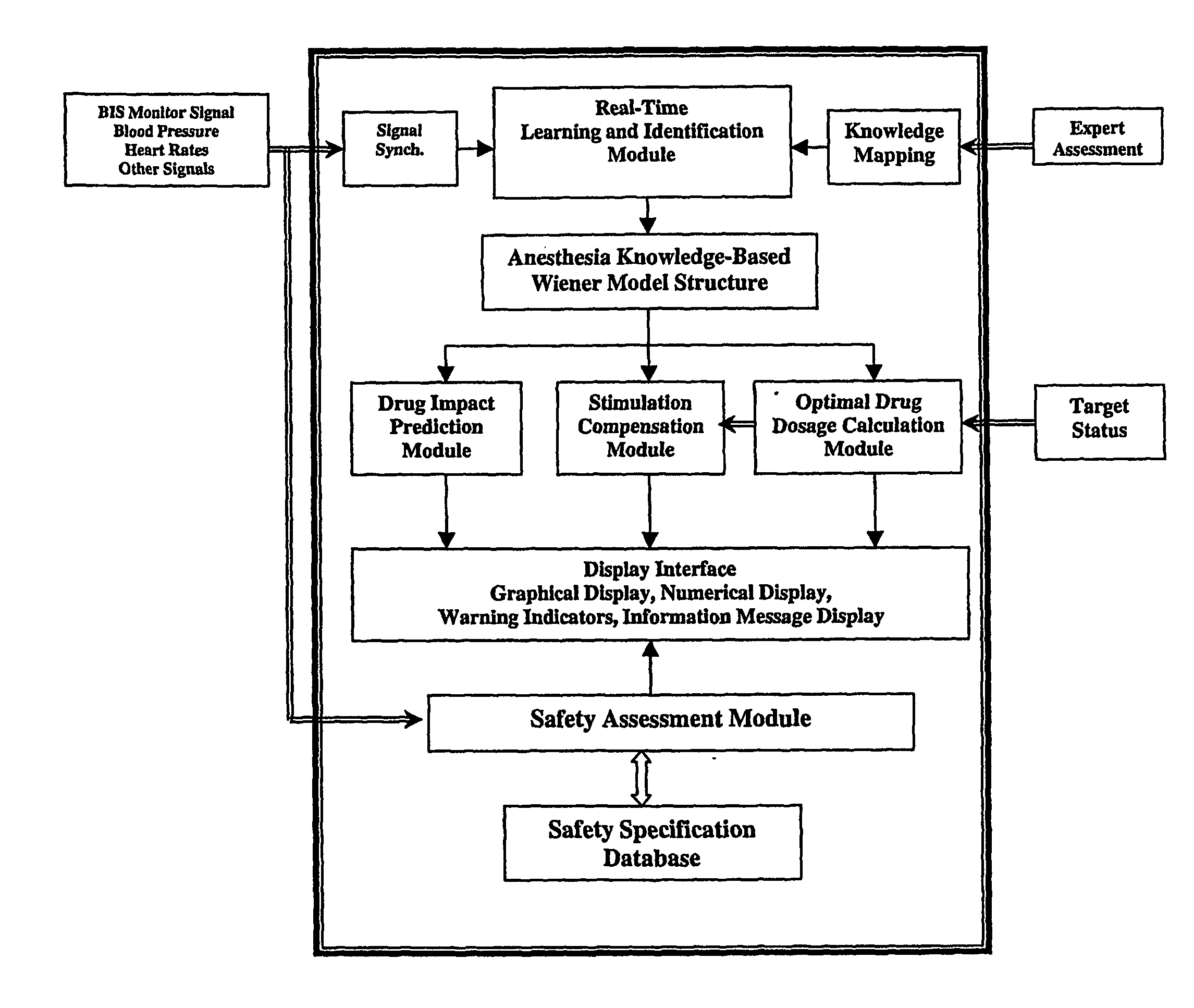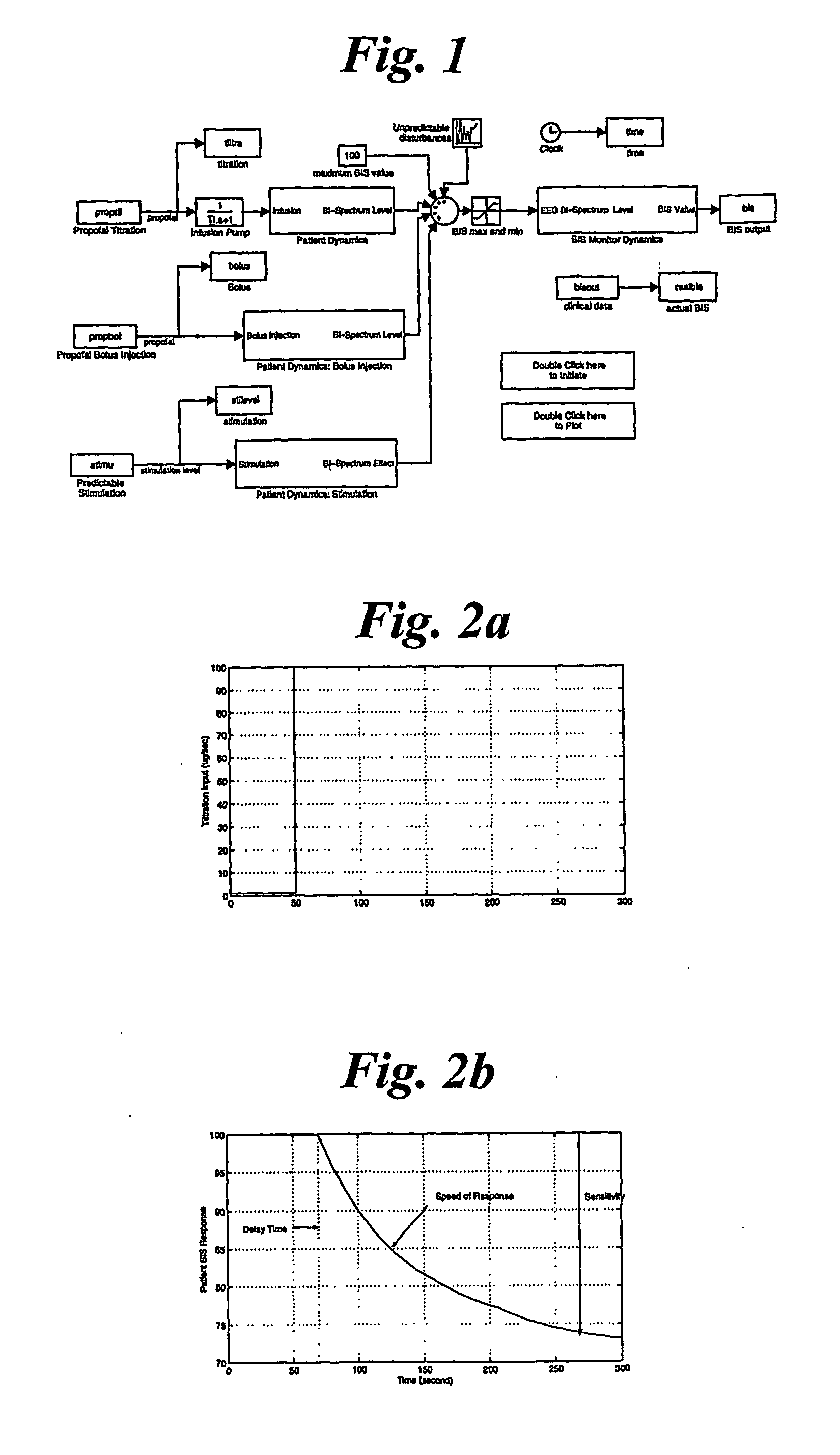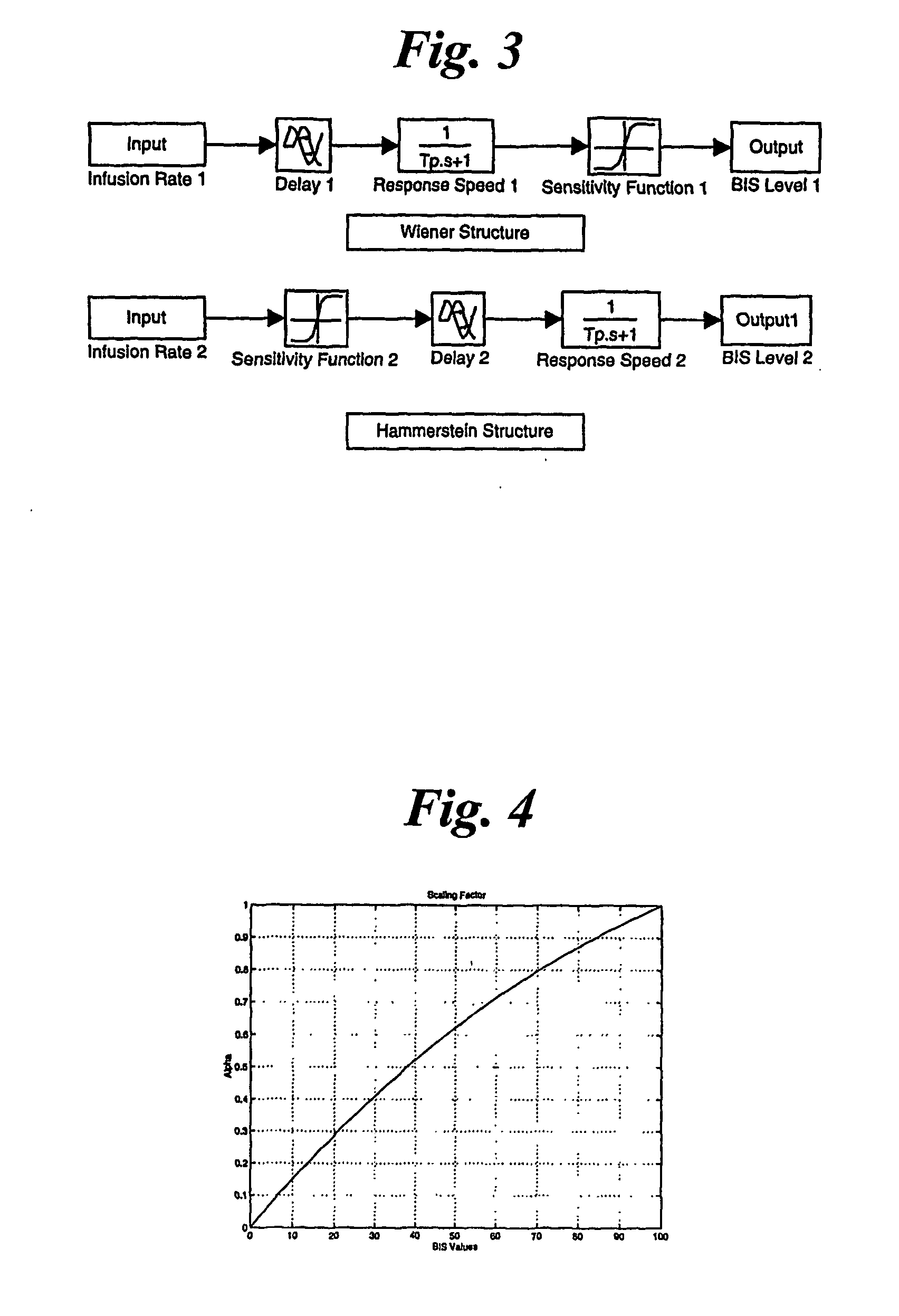System for identifying patient response to anesthesia infusion
a technology for identifying patient response and anesthesia, which is applied in the field of systems for monitoring patients during anesthesia infusion, can solve the problem that feeding control alone cannot avoid large fluctuations in bis values
- Summary
- Abstract
- Description
- Claims
- Application Information
AI Technical Summary
Benefits of technology
Problems solved by technology
Method used
Image
Examples
Embodiment Construction
[0061]FIG. 1 is a block and line representation of a patient model structure in accordance with the present invention. The model contains three building blocks, each with a similar structure, as shown in FIG. 1. The first two blocks represent the patient response to propofol titration and bolus injection, respectively. The third block characterizes the patient response to predictable stimulation such as incision, closing, etc. For concreteness, it is assumed that propofol is the anesthesia drug although the model structure is generic and valid for other anesthesia drugs.
1. Model Structures of Patient Dynamic Responses to Drug Infusion and Stimulation
[0062] The Titration Model
[0063] Anesthesia drug titration, illustratively propofol titration, is administered in this specific illustrative embodiment of the invention by an infusion pump (Abbott / Shaw LifeCare™ Pump Model 4). The dynamic response between the titration command to the pump and the drug infusion rate at the needle poin...
PUM
 Login to View More
Login to View More Abstract
Description
Claims
Application Information
 Login to View More
Login to View More - R&D
- Intellectual Property
- Life Sciences
- Materials
- Tech Scout
- Unparalleled Data Quality
- Higher Quality Content
- 60% Fewer Hallucinations
Browse by: Latest US Patents, China's latest patents, Technical Efficacy Thesaurus, Application Domain, Technology Topic, Popular Technical Reports.
© 2025 PatSnap. All rights reserved.Legal|Privacy policy|Modern Slavery Act Transparency Statement|Sitemap|About US| Contact US: help@patsnap.com



